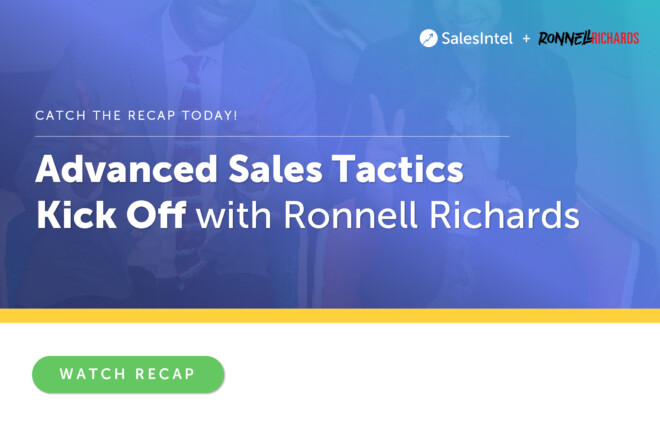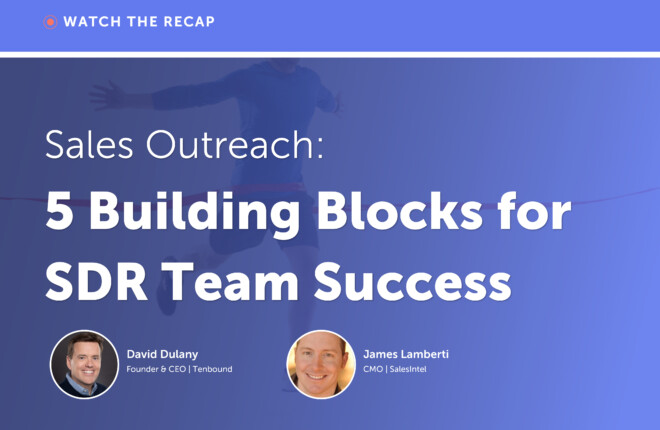Many businesses ignore relevance and opt for the “brute force” approach—trying to attract as many prospects as possible. However, the popular saying “the more, the merrier” isn’t always true.
Chasing up the wrong leads wastes time, money, and other resources. For this reason, the short-term efficiency and long-term growth of your sales department depend critically on your outreach strategy. It must address the modern customer’s need to feel special.
The need to feel unique is universal. Smart sales professionals and marketers have been aware of this for some time, and as a result, they have developed strategies to benefit from it. Key among such strategies is personalization and even hyper-personalization.
Customers want memorable experiences. Companies that experience rapid expansion generate 40% more revenue using personalization compared to the competition.
And that’s just one reason why businesses can’t afford to ignore personalization.
What is an outreach strategy?
A group of techniques designed to guide efforts to attract potential new clients is called an “outreach strategy.” Your outreach strategy may include a single activity or a collection of strategies, depending on the intricacy of your sales organization.
There is no one-size-fits-all strategy for reaching your target audience. The demands of your business, the nature of your offerings, unique sales challenges, and your target audience should all inform the framework you choose for your outreach. However, most, if not all, outreach initiatives are built with a few common goals in mind.
Closing deals, forming relationships with leads, establishing credibility, informing leads about products and services, and even just making that first contact are all examples of such goals.
Many people mentally associate the term “outreach” with cold calling and physical visits, but these aren’t the only options available to modern sales teams. There are more options than ever before for reaching out to potential customers, from email and phone to social media and creative marketing campaigns.
Salespeople are often the most active in sales outreach, but nowadays, assistance with outreach isn’t necessarily restricted to them alone. Sometimes, the marketing department may provide extra knowledge to help salespeople craft more well-informed and successful outreach.
What is personalized prospecting?
Personalization refers to efforts aimed at making a customer feel valued and appreciated. It often means tailoring your service delivery to match each individual customer’s specific needs. When it comes to sales prospecting, it involves finding the perfect words, phrases, and solutions to encourage prospects to act.
According to a survey conducted by Dynamic Research, 98% of organizations worldwide either recognize the importance of personalization to their overall business strategy or have made it the backbone of their customer experience operations.
This huge figure emphasizes the need to abandon the ineffective “dragnet” strategy in favor of making targeted, timely outreach to prospective customers. Don’t get left behind.
Personalization can start with something as simple as using the recipient’s name in an email subject line. Other examples are mentioning recent news relevant to their interests, such as informing your law firm clients of new online case management software or contacting a regular client with a tailored special offer. The more personalization you can offer, the more prospective customers will feel valued and appreciated, as well as primed for conversion.
Why is personalized prospecting important?
Today’s prospecting requires far more planning and strategy than in the past. The buyer’s journey is more complex, making effective prospecting crucial for achieving the right results as sales efficiency challenges become more pronounced. Technological advancements create new touchpoints between businesses and their customers, so the buyer’s journey is almost limitless.
According to Gartner, B2B sales reps only have 5% of a buyer’s time, and 77% of buyers find the sales journey complex or difficult. To really make an impact, salespeople need to make this journey smoother for each individual buyer. Customers’ expectations are inevitably rising to meet the larger stakes involved.
The good news is that carefully planned and personalized material is nearly impossible to ignore. Success in prospecting requires finding the appropriate people to target, creating hyper-personalized content that will appeal to them, and then distributing it at the right time. Sales teams can also successfully attract customers when they have access to data-driven insights and technology.
Driving sales with a personalized outreach strategy
Having the right data to meet the demands of your campaign is essential before launching your hyper-personalization strategy. Several services and tools can help expedite customer data collection and improve prospecting results.
You might be asking, “What data do you need to gather?” At this stage, you should gather information on several customer variables, such as:
- Customer interaction with competitor brands.
- Customer purchase and spending history.
- Social media habits and preferences—what resonates with them and the content they engage with the most.
- Demographic data—age, location, email address.
- Average spending from past purchases.
- Customer satisfaction scores.
Keep in mind that a successful hyper-personalization marketing strategy relies on collecting as much information about the target audience as possible.
How to collect customer data for your personalization efforts
While this is a much broader issue, here are some quick ways to get hold of customer information:
- Send out customer information forms (via your landing pages or newsletter sign-up forms)
- Monitor behavioral patterns over time.
- Purchase customer data from b2b data providers.
Note that the best and most reliable data for hyper-personalization comes from the clients themselves and the behavioral data you gather.
How can you personalize your outreach strategy?
Two primary personalization options exist:
-
Content personalization
By taking into account your intended audience’s individual preferences and interests, content personalization allows you to deliver more relevant and engaging messages. 71% of customers expect the businesses they patronize to personalize their interactions.
One way to do this is to tailor your communications to each customer’s specific needs and interests. Do customers want to communicate over social media? Should you be investing in business communication tools like a virtual phone service for better customer support? Are you using the right channels? These are all questions that you need to answer.
-
Customer journey personalization
Throughout their interactions with your brand, your target audience has unique needs and preferences you can address via customer journey personalization. This could involve personalized offers, customized messaging, or targeted promotions at various touchpoints along the customer journey.
Both options are vital for forming strong relationships and creating a positive customer experience. Once you have a firm grasp on who you’re trying to reach and what they value, you can craft more effective messages and customer experiences that will keep them coming back for more.
Here are some of the ways you can add personalization to your outreach strategy and drive sales:
Email marketing
Email is a great platform for introducing personalization. First, if you haven’t already, try replacing generic greetings with actual names. An automation marketing strategy can streamline this entire process, including personalizing emails and timed targeting of leads at different stages of their customer journey.
Send them useful reminders and special offers based on what you’ve learned from their past actions. If a customer is looking at your wristwatch collection, it might make sense to send them an email advertising sales on new timepieces. The same logic applies to replaceable products or those that require recurrent payments.
Set clear priorities
The idea behind prioritization is straightforward. It’s how sales teams decide which accounts to focus on because of their engagement and value potential—prioritizing calls for far more than just efficient planning. Everyone on the team has to understand how to set priorities using a combination of established guidelines and data-based research.
When it comes to strategy, everyone on the team needs to be on the same page about which leads are the most important and how to approach them. For example, a prospect who inquires about a product will be given more attention than an entirely cold outreach.
Push notifications
Push notifications are the next place you should use personalization. By simply adding a personal touch, you can increase the open rate of your push notifications. Research indicates that emojis can increase the push notification open rate by 85%.
Use these elements to spice up your messaging and encourage prospects to engage with your brand.
Put your imagination to work
Creativity is the key to personalized communication. Instead of following a script, it empowers salespeople to make genuine connections with customers. Use creative storytelling to create memorable messages that speak to your customer’s pain points or challenges. Depending on your business persona, humor is another effective way to engage customers.
You can go the extra mile by enabling customization options for customer accounts with personalized avatars and user profiles.
Web content
Many believe that only online stores can benefit from personalized website content. While it is very effective for these businesses, it is not limited to that industry alone. It’s also an effective strategy for B2B companies. Your website is usually the customer’s first point of contact with your business, so it must provide a personalized and relevant experience.
Use dynamic content to personalize your website according to your target audience’s behavior, preferences, and interests. Almost everything on your website is up for personalization except for the URL—unless you plan to buy domain names for every potential lead! Think about personalized calls to action, hyper-targeted messaging, welcome-back messages, a discount offer after multiple visits, or recommendations based on browsing history.
Personalize your outreach to supercharge sales
Due to rising competition and saturation in the modern market, vendors have increased their outreach efforts, but customers have learned to ignore them. You can make your sales process more engaging and productive if you personalize the messaging, content, and overall customer experience for each customer. This can help you create a connection with the prospect and earn their trust, both of which can increase the likelihood of closing the deal.
Don’t forget to use analytics and data to learn more about your audience’s demographics, interests, and needs. This can let you tailor your personalization approach and make informed decisions about your sales strategy.
Author Bio –
Jessica Collier – VP of Growth Marketing
Jessica Collier is VP of Growth Marketing at Assembly Software, developers of practice management software and cloud-based solutions for the legal sector. Her passion for digital innovation and agile marketing has led to significant success in innovative tech marketing, client collaboration and driving conversion results.




